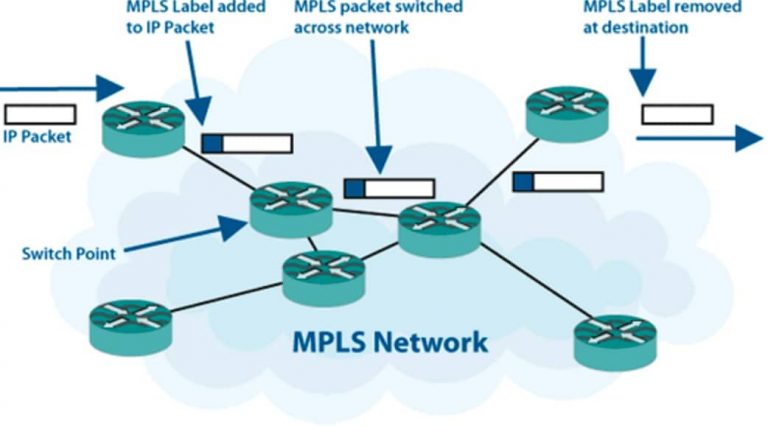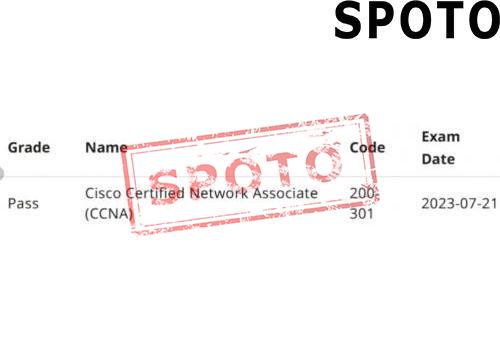
Table of Contents
As the demand for efficient, scalable, and high-performance network solutions grows, Multiprotocol Label Switching (MPLS) Traffic Engineering (TE) has become a pivotal technology in modern networking. Chapter 12 of the CCIE Routing and Switching v5.0 Official Cert Guide delves into the complexities and applications of MPLS Traffic Engineering, offering a comprehensive overview of its principles, mechanisms, and design considerations. This blog post aims to break down these concepts and provide a clear understanding of MPLS TE for networking professionals and enthusiasts.
What is MPLS Traffic Engineering?
MPLS Traffic Engineering is a technique used to optimize the flow of network traffic. It allows network operators to control the path that data packets take through the network, ensuring efficient use of available bandwidth and improving overall network performance. MPLS TE is particularly useful in large-scale networks where traffic patterns can vary significantly, and efficient resource utilization is critical.
Key Components of MPLS Traffic Engineering
-
Label Switched Path (LSP) An LSP is a predetermined path through an MPLS network that data packets follow from an ingress node to an egress node. Each LSP is established using a signaling protocol such as RSVP-TE (Resource Reservation Protocol-Traffic Engineering), which sets up the path and reserves the necessary resources.
-
Traffic Engineering Database (TED) The TED is a specialized database that stores information about the network topology, including available bandwidth and link characteristics. It is used by the path computation element (PCE) to calculate optimal paths for LSPs.
-
Path Computation Element (PCE) The PCE is responsible for determining the best path for an LSP based on the network topology and traffic engineering constraints. It uses algorithms like Constrained Shortest Path First (CSPF) to find paths that meet specific criteria such as minimum bandwidth or maximum delay.
-
Resource Reservation Protocol-Traffic Engineering (RSVP-TE) RSVP-TE is a signaling protocol used to establish and maintain LSPs in an MPLS network. It handles the reservation of resources along the path and ensures that the necessary bandwidth is available for the LSP.
MPLS Traffic Engineering Mechanisms
-
Explicit Route Objects (ERO) EROs are used to define the specific path that an LSP should take through the network. They provide the flexibility to override the default routing decisions and direct traffic through preferred routes based on various constraints.
-
Administrative Groups (Link Coloring) Administrative groups, also known as link colors, are used to categorize network links based on certain attributes like geographical location or link type. This categorization helps in path selection by allowing or disallowing certain links for specific LSPs.
-
Bandwidth Constraints MPLS TE allows for the specification of bandwidth requirements for each LSP. This ensures that the paths selected can accommodate the required bandwidth, preventing congestion and improving the quality of service.
-
Fast Reroute (FRR) Fast Reroute provides a mechanism for rapid recovery from link or node failures. By precomputing backup paths and immediately switching traffic to these paths upon failure, FRR minimizes traffic disruption and enhances network reliability.
Designing MPLS Traffic Engineering Networks
-
Network Topology and LSP Design Designing an MPLS TE network starts with understanding the network topology and traffic patterns. This involves identifying key traffic flows and determining the optimal paths to ensure efficient use of network resources.
-
Constraint-Based Path Selection Path selection in MPLS TE is driven by constraints such as bandwidth, delay, and administrative policies. These constraints must be carefully defined and implemented to achieve the desired network performance.
-
Scalability Considerations As networks grow, the scalability of MPLS TE becomes crucial. This includes managing the number of LSPs, the complexity of the TED, and the computational load on the PCE. Techniques like hierarchical LSPs and aggregation of traffic flows can help manage scalability.
-
Monitoring and Optimization Continuous monitoring of LSP performance and network conditions is essential for maintaining optimal traffic engineering. Tools like MPLS ping and traceroute are used to verify LSP integrity and troubleshoot issues. Optimization involves adjusting LSPs and network configurations based on real-time data and performance metrics.
MPLS Traffic Engineering Terminology
-
Constrained Shortest Path First (CSPF) CSPF is an algorithm used to compute the shortest path for an LSP while considering various constraints like bandwidth and administrative groups. It extends the basic shortest path first (SPF) algorithm by incorporating additional criteria into the path computation process.
-
Link-State Advertisement (LSA) LSAs are used by routing protocols like OSPF and IS-IS to distribute information about the network topology. In the context of MPLS TE, LSAs carry additional information such as available bandwidth and link attributes, which are used by the TED.
-
Tunnel Tail-End The tunnel tail-end refers to the destination node of an LSP. It is the point where the MPLS labels are removed, and the original IP packet is forwarded to its final destination.
-
Preemption Preemption is a mechanism that allows higher-priority LSPs to take over resources from lower-priority LSPs. This ensures that critical traffic can be accommodated even during periods of high network congestion.
MPLS Traffic Engineering is a powerful tool for optimizing network performance and ensuring efficient use of resources. By understanding its key components, mechanisms, and design principles, network operators can implement effective MPLS TE solutions that meet the demands of modern networking environments. Whether you're managing a large-scale service provider network or an enterprise WAN, MPLS Traffic Engineering provides the flexibility and control needed to deliver high-quality, reliable network services.










